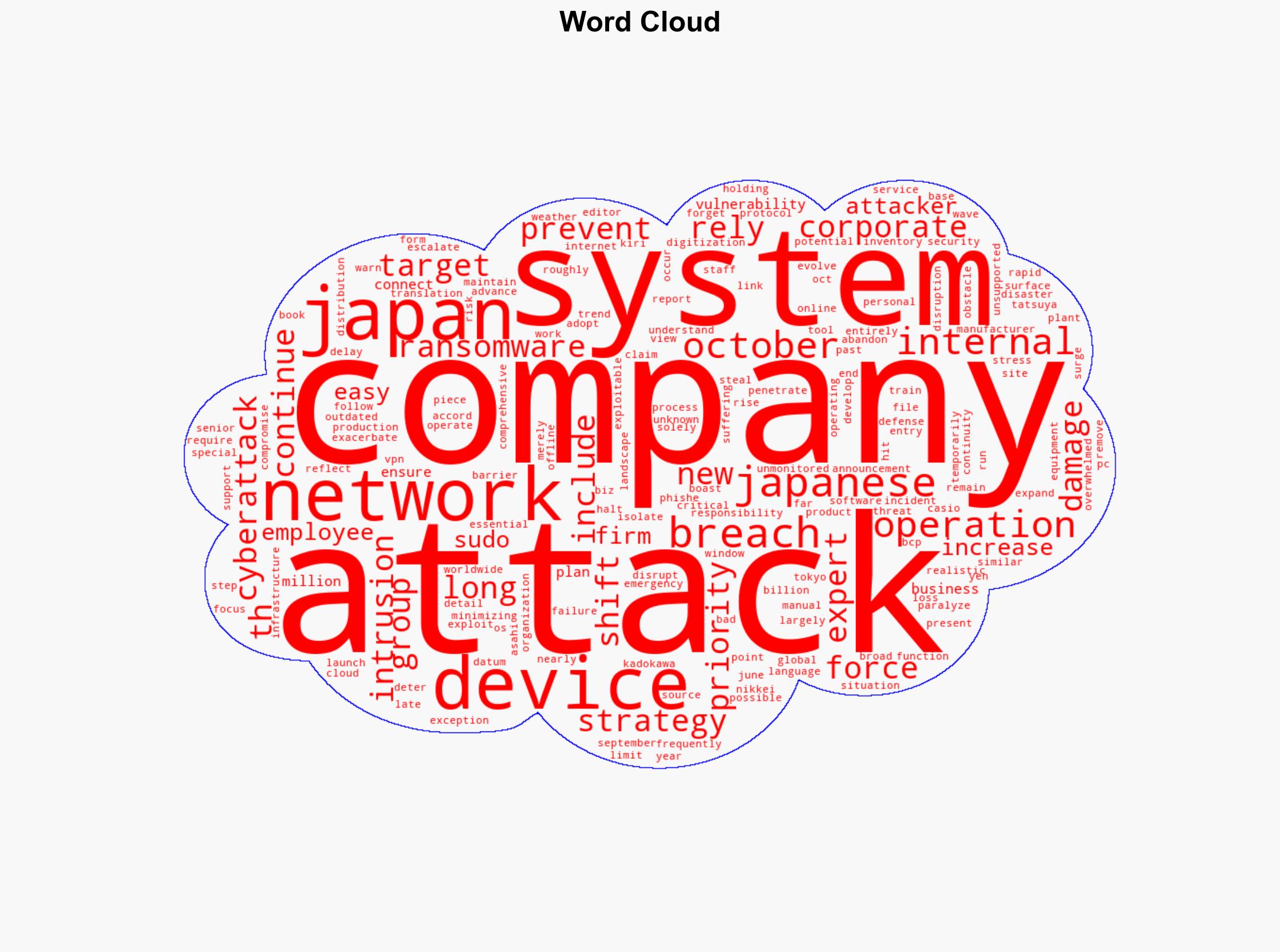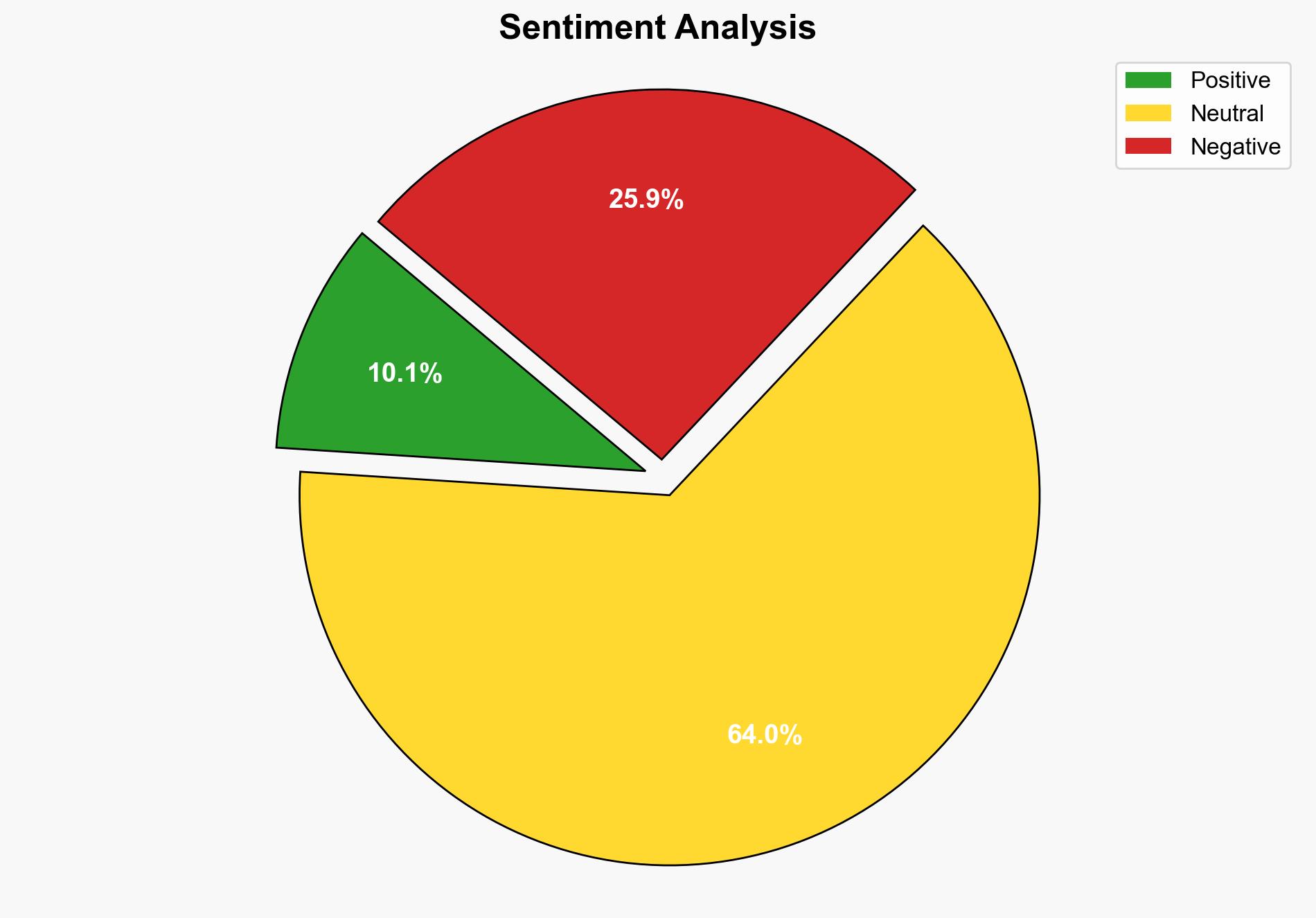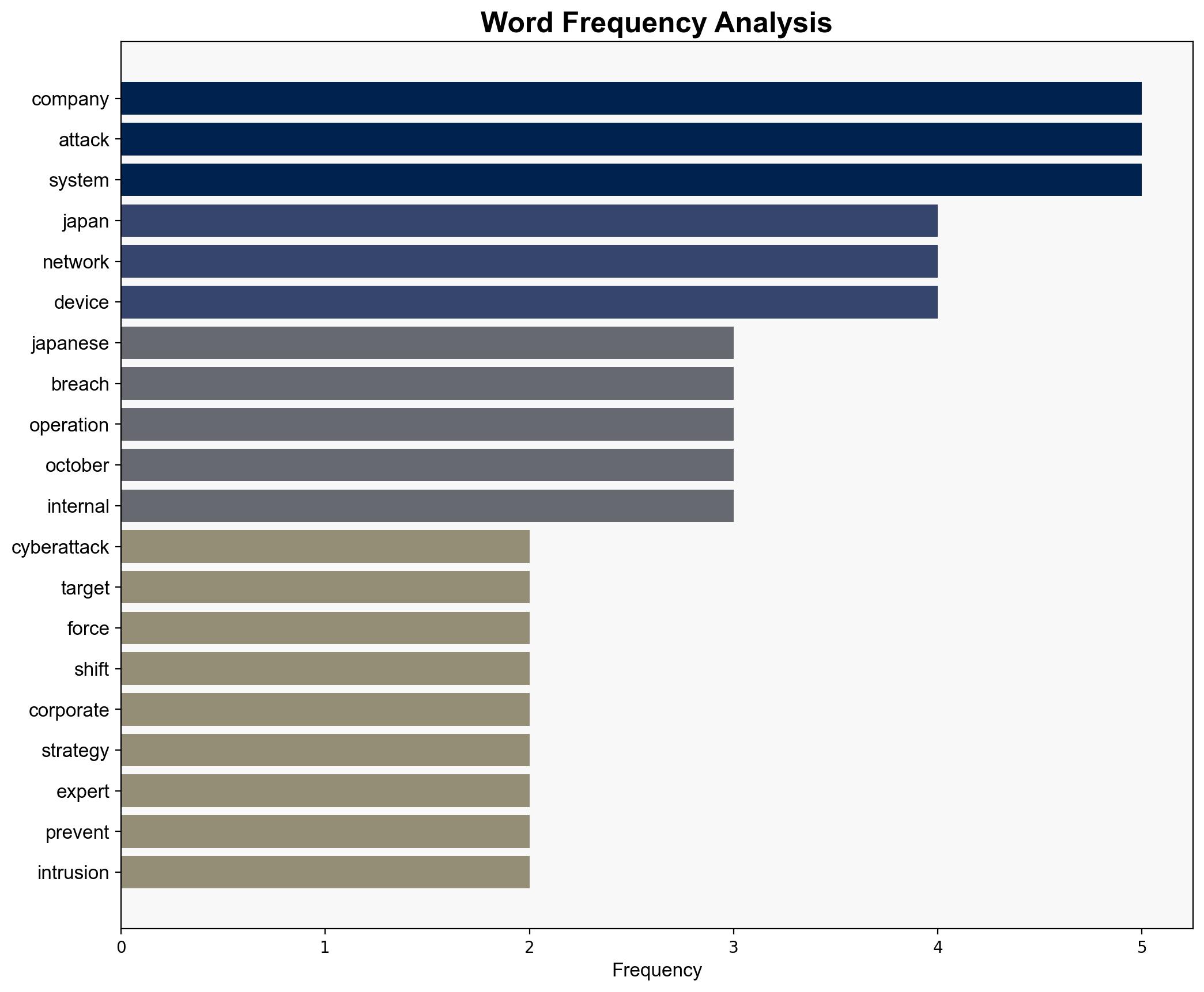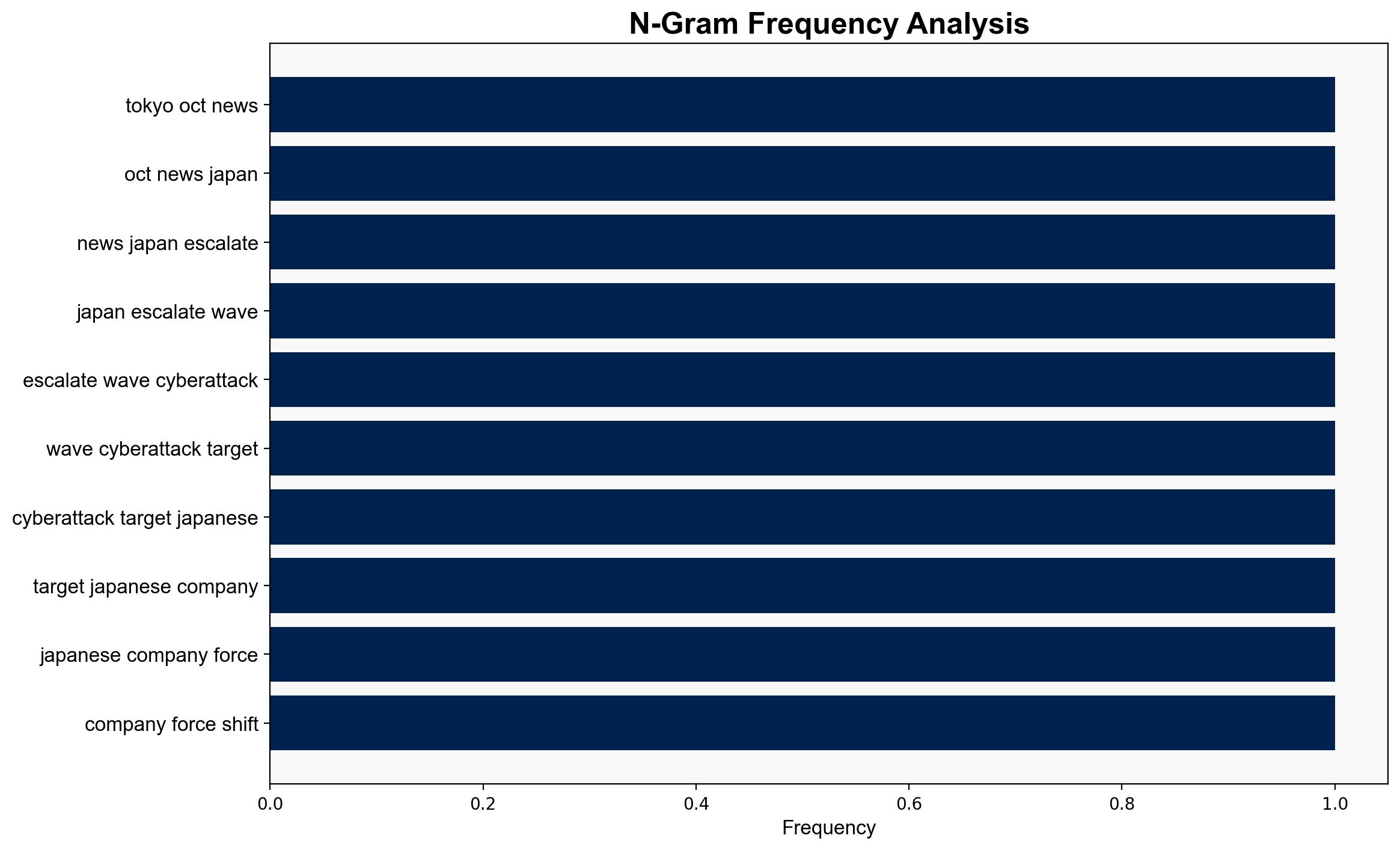Ransomware Surge Forces Firms to Prepare for Inevitable Breaches – Newsonjapan.com
Published on: 2025-10-16
Intelligence Report: Ransomware Surge Forces Firms to Prepare for Inevitable Breaches – Newsonjapan.com
1. BLUF (Bottom Line Up Front)
The surge in ransomware attacks on Japanese companies is part of a broader global trend, necessitating a shift from prevention to damage control and continuity planning. The most supported hypothesis is that increased digitization and outdated systems have expanded vulnerabilities, making Japanese firms attractive targets. Confidence level: High. Recommended action: Immediate enhancement of cybersecurity measures, including comprehensive business continuity planning and employee training.
2. Competing Hypotheses
1. **Hypothesis A**: The increase in ransomware attacks on Japanese firms is primarily due to the global trend of rising cyberattacks, with Japan being a late but inevitable target as language barriers diminish.
2. **Hypothesis B**: The surge is specifically due to Japan’s rapid digitization and reliance on outdated systems, which have significantly increased vulnerabilities, making these firms particularly attractive targets.
Using the Analysis of Competing Hypotheses (ACH) 2.0, Hypothesis B is better supported. The evidence of outdated systems, increased digitization, and specific vulnerabilities aligns more closely with recent attack patterns.
3. Key Assumptions and Red Flags
– **Assumptions**:
– Language barriers have historically protected Japanese firms.
– Rapid digitization inherently increases vulnerability.
– **Red Flags**:
– Over-reliance on the narrative that outdated systems are the sole vulnerability.
– Potential underestimation of targeted attacks by specific groups like Kiri.
4. Implications and Strategic Risks
The current trend could lead to increased economic disruptions and loss of sensitive data, affecting corporate reputation and financial stability. There is a risk of cascading effects if critical infrastructure is targeted. Geopolitically, Japan’s perceived vulnerability could embolden adversaries.
5. Recommendations and Outlook
- Enhance cybersecurity infrastructure with updated systems and software.
- Develop and implement comprehensive business continuity plans.
- Conduct regular cybersecurity training for employees.
- Scenario Projections:
- Best Case: Successful mitigation of vulnerabilities leads to reduced attack frequency.
- Worst Case: Continued attacks result in significant economic and reputational damage.
- Most Likely: Incremental improvements in cybersecurity reduce but do not eliminate attacks.
6. Key Individuals and Entities
– Asahi Group Holdings
– Kiri (ransomware group)
– Kadokawa
– Casio
– Tatsuya Sudo (Nikkei senior editor)
7. Thematic Tags
national security threats, cybersecurity, counter-terrorism, regional focus





